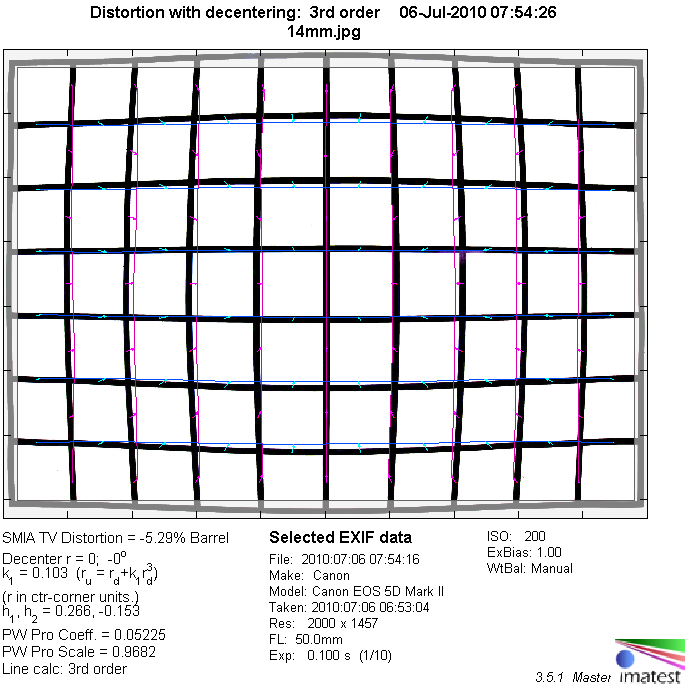|
Samyang 14mm f/2.8 IF ED UMC Aspherical - Full Format Review / Test Report - Analysis |
|
Lens Reviews -
Canon EOS (Full Format)
|
|
Page 2 of 3

Distortion
Ultra wide angle lenses often struggle to tame the amount of barrel distortion and this is also a major weakness of the Samyang 14mm f/2.8. It produces a whopping 5.3% barrel distortion with a mustache-style sub-frequency. For serious architecture photography this is pretty much a no-go unless you correct the problem during post-processing (which is not easy due to the rather complex distortion characteristic). However, to be fair this is mostly a non-issue for landscape photography and that's surely a primary application for such a lens.

Note: the chart above has a real-world size of about 120x80cm.
Vignetting
Vignetting is another critical aspect for ultra-wides especially on full format DSLRs. The Samyang shows a rather hefty amount of light-falloff at f/2.8 - more than 3EV/f-stops. Stopping down to f/4 resolves some of the issue but it's best to stick to f/5.6 or even f/8 if possible. This may sound worrisome but please note that all wide-angle lenses suffer from a "natural" amount of vignetting which cannot be avoided. Additionally the design of today's image sensors (retracted photodiodes) are also a limiting factor here.

MTF (resolution)
Well, we were stunned by the results in this category and I reckon you will join us once you've had a look at the charts below. The Samyang produced nothing short of outstanding resolution figures for a lens in this class. The results are very even across the tested aperture range which means excellent to superb center resolution and very good to excellent borders and corners. Field curvature (flatness of the focus plane) is well controlled.
I reckon that you will not believe us so please have a look at our field image section.
Please note that the MTF results are not directly comparable across the different systems!
Below is a simplified summary of the formal findings. The chart shows line widths per picture height (LW/PH) which can be taken as a measure for sharpness.
If you want to know more about the MTF50 figures you may check out the corresponding Imatest Explanations
Lateral Chromatic Aberrations (CAs)
The CA characteristic (color shadows at harsh contrast transitions) came as another surprise. Ultra-wide angle lenses often tend to be so-so here but the Samyang mastered this aspect ... easily. The CAs are well below field-relevance at less than 0.3px at the image borders.

|